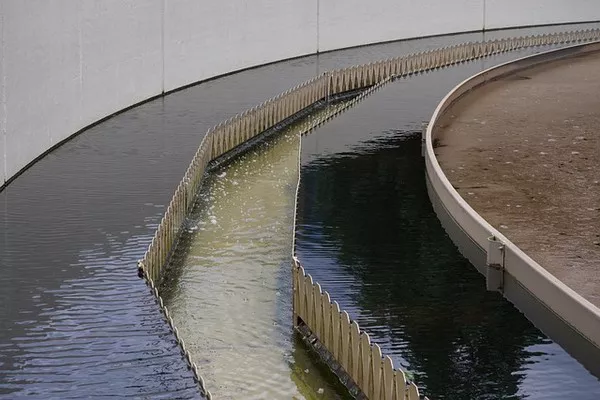Sewage water, once considered a troublesome waste product, undergoes a remarkable transformation through treatment processes. The treated effluent emerges with potential for various beneficial applications, ranging from irrigation to industrial cooling. However, what exactly is sewage water called after treatment? This article delves into the terminology and characteristics of treated sewage water, exploring its significance in modern water management.
Understanding Treated Sewage Water
The Treatment Process
Treated sewage water, often referred to as reclaimed water or recycled water, undergoes rigorous treatment to remove contaminants and impurities. This process typically involves several stages, including preliminary, primary, secondary, and tertiary treatments.
Preliminary Treatment: In this phase, large objects such as debris, grit, and solids are removed through screening and sedimentation.
Primary Treatment: During primary treatment, suspended solids are further separated through sedimentation, producing a partially treated effluent.
Secondary Treatment: Biological processes are employed in secondary treatment to break down organic matter and remove nutrients like nitrogen and phosphorus. This stage significantly improves water quality.
Tertiary Treatment: Tertiary treatment employs advanced processes such as filtration, disinfection, and sometimes additional chemical treatments to further enhance water quality, making it suitable for specific applications.
Characteristics of Treated Sewage Water
After undergoing these treatment processes, the resulting water exhibits distinct characteristics:
Nutrient Levels: Treated sewage water often contains residual nutrients such as nitrogen and phosphorus, albeit at lower concentrations compared to raw sewage. These nutrients can be beneficial for certain applications, such as fertilization in agriculture.
Microbial Content: Effective disinfection methods employed during treatment reduce microbial content, making the water safer for various uses.
Chemical Composition: Treated sewage water may still contain trace amounts of chemicals from industrial and domestic sources. However, these levels are typically regulated to ensure compliance with safety standards.
Applications of Treated Sewage Water
1. Agricultural Irrigation
One of the most common uses of treated sewage water is for agricultural irrigation. Reclaimed water, rich in nutrients, can supplement or replace traditional freshwater sources for crop irrigation. This practice conserves freshwater resources and reduces the need for chemical fertilizers, promoting sustainable agriculture.
Challenges and Considerations: Despite its benefits, using treated sewage water for irrigation requires careful monitoring to prevent potential health risks and soil contamination. Proper management practices, including soil testing and crop selection, are essential to ensure safe and efficient utilization.
2. Industrial Processes
Industries often require large volumes of water for various processes, including cooling, manufacturing, and cleaning. Treated sewage water can serve as an alternative water source for industrial operations, reducing reliance on freshwater and alleviating strain on local water supplies.
Water Quality Requirements: Industries must assess the quality of treated sewage water to ensure compatibility with their specific processes. Depending on the application, additional treatment or filtration may be necessary to meet required standards.
3. Environmental Restoration
Reclaimed water can contribute to environmental restoration efforts, particularly in areas facing water scarcity or degraded ecosystems. By replenishing natural water bodies and supporting aquatic habitats, treated sewage water can help restore ecological balance and biodiversity.
Ecosystem Health: Before introducing treated sewage water into natural ecosystems, thorough environmental impact assessments are crucial to evaluate potential effects on native flora and fauna. Monitoring programs ensure that water quality standards are maintained to safeguard ecosystem health.
4. Urban Non-Potable Uses
In urban areas, treated sewage water can be utilized for various non-potable purposes, such as landscaping, street cleaning, and toilet flushing. This practice reduces demand on freshwater supplies and minimizes wastewater discharge into rivers and oceans.
Public Perception: Acceptance of treated sewage water for urban uses depends on public perception and awareness.
Effective communication and outreach programs are essential to address concerns and promote understanding of the benefits and safety measures associated with reclaimed water use.
Regulatory Framework and Safety Standards
Regulatory Oversight
The use of treated sewage water is subject to stringent regulations and safety standards established by governmental agencies and international organizations. These regulations ensure that reclaimed water meets specified quality criteria and poses minimal risk to human health and the environment.
Water Quality Guidelines: Regulatory agencies develop and enforce water quality guidelines tailored to the intended use of reclaimed water. Parameters such as microbial content, nutrient levels, and chemical concentrations are closely monitored to ensure compliance.
Public Health Protection
Protecting public health is a paramount concern in the management of treated sewage water. Comprehensive risk assessments and monitoring programs are conducted to identify and mitigate potential health hazards associated with reclaimed water use.
Pathogen Control: Effective disinfection methods, such as chlorination or ultraviolet (UV) irradiation, are employed to eliminate pathogens and ensure the safety of reclaimed water for various applications.
Conclusion
Treated sewage water, known as reclaimed water or recycled water, undergoes extensive treatment processes to remove contaminants and impurities. This transformed water resource holds significant potential for various beneficial applications, including agricultural irrigation, industrial processes, environmental restoration, and urban non-potable uses. However, careful management, regulatory oversight, and adherence to safety standards are essential to maximize the benefits of reclaimed water while safeguarding human health and the environment. By embracing reclaimed water as a valuable resource, communities can enhance water sustainability and resilience in the face of growing water challenges.
Through this article, we have unlocked the mysteries surrounding treated sewage water, shedding light on its importance in modern water management practices. As we continue to confront global water scarcity and environmental degradation, the responsible use of reclaimed water offers a promising solution towards a more sustainable and water-secure future.

